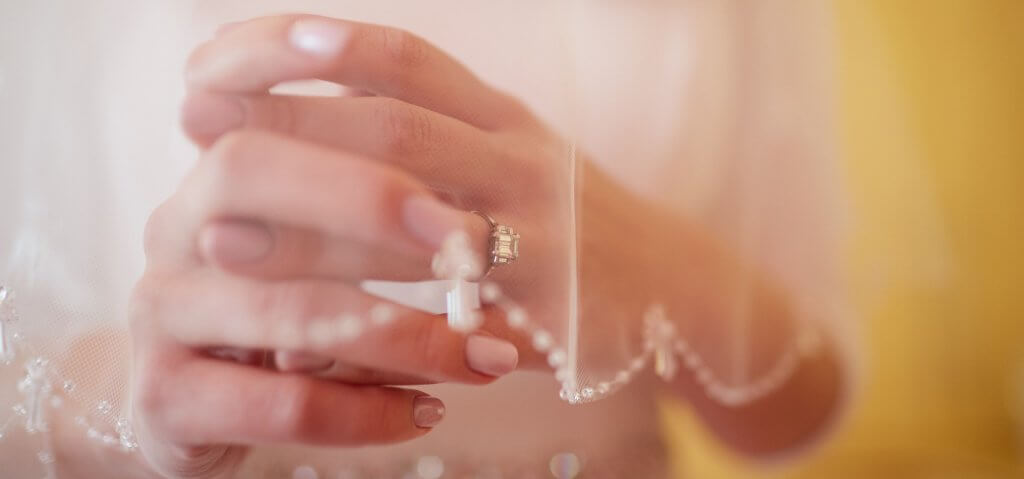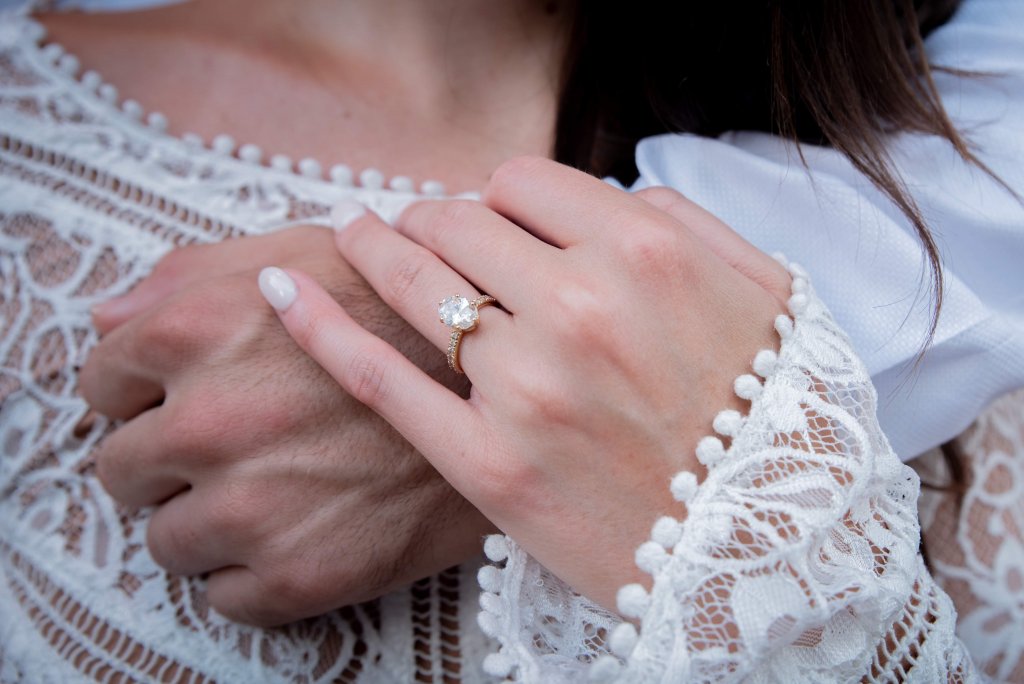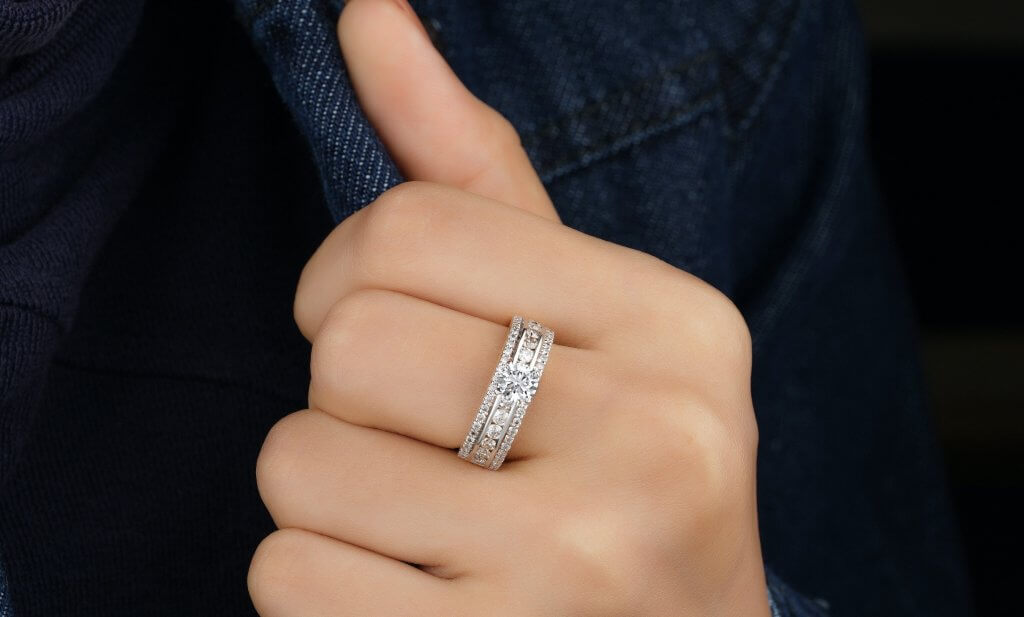What is an Elongated Cushion Cut Diamond? Everything You Need to Know
Key Takeaways
- Ordinarily, the most popular Cushion cuts follow square dimensions, with each side being the same length.
- There are, however, some Cushion cuts which feature rectangular proportions.
- A traditional square Cushion will have a length to width ratio of 1:1, whilst the elongated Cushion is 1.10 or more.
- This is evident when viewed face-up, but when viewed from other angles the difference is in the reduced depth of the elongated Cushion.
- In terms of their beauty, elongated cuts can be a little more flattering than other Cushion cuts as they can make the finger look slimmer.
- Although they can be hard to come by, they are a great alternative.

True to its name, the Cushion cut is one of the most luxurious and opulent of all the diamond shapes out there. It’s a shape that consistently proves incredibly popular for engagement rings, thanks to its plush shape and tremendous levels of fire and brilliance, and its versatility for ring design.
The most popular Cushion cut tends to follow square dimensions – or, in other words, in the majority of Cushion cut diamonds, each of the sides are the same length. The shape is softened, however, by four rounded corners, which keep the shape from resembling the much more angular Princess cut design. This is, after all, what gives the shape its name – its resemblance to a couch cushion. It’s a fascinating shape that somehow manages to make the hardest natural substance on earth appear plush and soft.
In some instances, however, you might find yourself looking at Cushion cut diamonds that feature rectangular proportions. These diamonds are known as Elongated Cushion cuts, and they offer a totally different aesthetic when used in jewelry – and totally different benefits, as well as some (potentially deal-breaking) disadvantages.
- Features
- Ideal Cut Proportions
- Square vs Elongated Cushion Cuts
- Elongated Cushion Cut Ring Ideas
- Summary
Features
We’ve written an in-depth guide to the Cushion cut already, and it’s a must-read for anyone thinking of putting this diamond in their engagement ring, but, owing to the popularity of the shape, we focused much more of our attention on the square Cushion, rather than the elongated (or rectangular) Cushion cut.
The elongated Cushion is very similar in terms of its facet pattern, which is why it is considered an alternative version of the Cushion shape, rather than a totally unique shape in and of itself.
When viewed face-up, the only clear difference between the two is length to width ratio. While the traditional, square Cushion obviously has a length to width ratio of 1:1 (or near enough to appear square), the elongated cushion can have a length to width ratio of 1.10 or more.
When viewed from other angles, it’s the difference is easily noticeable in the reduced depth of the elongated Cushion. More like an Emerald cut, a lot more weight is distributed across the upper portion of the diamond, rather than within the pavilion beneath.
The shape retains the Cushion cut’s distinctively round corners, while creating a more noticeable difference between it and the Round Brilliant, which it can be confused with when seen from a distance.
There is no definitive ratio for an elongated Cushion. In some, the elongation is minor; in others, the stone looks particularly long and thing.
What are the Ideal Cut Proportions for the Elongated Cushion?
As with any diamond shape, you’ll want to make sure that the diamond you pick out is accompanied by a GIA report, and that it has been given symmetry and polish grades of Excellent or Very Good.
But, beyond that, you’ll also want to pay close attention to the other details listed in the report. Even with good symmetry and polish, poor proportions can lead to a dull, lifeless, and generally unattractive diamond.
The GIA doesn’t offer a Cut grade for any shape but the Round Brilliant, but the industry does widely regard the following proportions to be ideal for the elongated Cushion cut.
Length to Width Ratio
Ideally, your elongated Cushion will feature a length to width ratio of 1.15 – 1.20. This would be considered Excellent.
A Very Good length to width ratio will be 1.10 – 1.14, or 1.21 – 1.30.
Table
An Excellent table percentage will fall between 60 – 65.9. Alternatively, a Very Good table percentage will fall between 58 – 59.9, or 66 – 69.9. If the table is too small, then the amount of light entering and leaving the diamond will be limited; too large, and not enough light will be refracted into the crown.
Depth
When it comes to depth percentage, it’s best to look at diamonds that fall between 63 – 67.9 (Excellent), or either 58 – 62.9 or 68 – 69.9.
Girdle and Culet
As with any diamond shape, it’s best to focus on diamonds with no culet, or one graded Very Small. Any larger, and you will start to be able to see the culet through the table of your diamond.
The girdle should be graded Very Thin to Slightly Thick. If the girdle is too thin, the integrity of the diamond is at risk; too thick, and you will be able to notice it.
Square vs Elongated Cushion Cuts
If you’re already feeling drawn towards the Cushion cut, then learning about the existence of the slightly less popular elongated Cushion can be something of a curveball. Here are your burning questions about the differences between the two, answered.
Do Elongated Cushions Look Bigger?
Yes, and this is certainly one of their selling points.
Most elongated shapes, whether the Marquise, Oval, Pear or Emerald, appear larger than shapes with length to width ratios that are more even (or totally even).
One of the disadvantages to Cushion cut diamonds (square) is that they are one of the deeper cuts, which means that their face-up appearance (what you see when you’re looking down at the diamond, as you do when it’s set within a ring setting) is smaller than the face-up appearances of the diamonds we mentioned above.
For a lot of shoppers, finding an impressive, sizeable diamond is a priority, so other shapes tend to win-out against the Cushion.
The elongated Cushion offers a convenient alternative – one that retains the unique essence of the Cushion, without losing too much of the diamond’s overall weight to the lower portion of the cut.
Then again, the Cushion’s deeper cut gives it one distinct advantage over other shapes…
Do Elongated Cushions Sparkle More than Square Cushions?
No. Since the elongated Cushion is a little shallower than the square, some of the shape’s characteristically vivid light performance is lost.
Square Cushion cuts are known for their fire – the vibrant, colored flashes of light that diamonds can create alongside those stark, white flashes of brilliance. While almost all diamond shapes produce plenty of fire, the unique proportions of the Cushion makes it a particularly powerful source. It’s for this reason that a lot of shoppers overlook the square Cushion cut’s slightly smaller face-up appearance.
By elongating the Cushion cut’s design and allocating more weight to the upper portion of the diamond, some of that fire-producing potential is lost. The elongated Cushion cut remains a very sparkly and vibrant shape, but you will notice a difference in a side-by-side comparison between the square Cushion and the rectangular Cushion.
Are Elongated Cushions More Flattering?
They can be a little more flattering, since the elongated shape can offer the illusion of length to the finger, and make it appear slimmer. This is why shapes like the Emerald and Oval often prove so popular, too.
This is another reason why the elongated shapes are so popular. While the Round Brilliant consistently comes out on top, the Oval is almost always close behind because, while similar in style, it offers a more flattering shape for the finger.
Are Elongated Cushions More Expensive?
No. Elongated Cushion cut diamonds tend to be priced comparably with square Cushion cut diamonds, or a little lower.
Remember that this will only hold water if other aspects of quality are the same. In two Cushion cut diamonds featuring the same clarity, color and cut grades, correct proportions (for their different ratios) and the same level of fluorescence – not to mention the same carat weights – you are unlikely to find any remarkable difference in price.
Elongated Cushions are less common, but they’re also not highly sought-after like some shapes, so sellers don’t attach a premium price to them.
Elongated Cushion Cut Ring Ideas
Liking the look of an elongated Cushion cut is only half the story. Since your diamond is going to spend the rest of its life within the engagement ring you choose, it’s important that you’re happy with how it looks as a part of the overall design, rather than a standalone object.
The Cushion really is a versatile shape but playing with ratio and picking an elongated Cushion over the traditional square means you’ll want to think about how to make it look as beautiful as possible in a ring.
An Elongated Cushion Halo
In our experience, halos are either a non-negotiable feature, or a non-starter. In other words, you’ll probably know already whether you’re all-for the halo, or totally closed to the idea of incorporating one into your ring design.
They’re great for compensating for the slight loss of sparkle that an elongated Cushion cut will suffer from, and for boosting the diamond’s color (provided the melee diamonds used in the halo aren’t a higher color grade than the center stone itself).
An East-West Elongated Cushion Engagement Ring
The East-West ring design is a fresh, modern alternative to the more traditional styles, and simply refers to designs that turn the elongated cuts – whether the Oval, Marquise, or elongated cushion – horizontally, so that it runs across the width of the finger, rather than following the length.
The east-west engagement ring is a particularly popular style at the moment, and allows you to explore the elongated Cushion cut in a way that is not possible in regular Cushion cut diamonds.
It’s not for everyone – but, for the right person, the style offers the perfect twist without being too ‘out there’.
A Three-Stone Elongated Cushion Cut Engagement Ring
While it may not be quite as sparkly as its square-shaped counterpart, the elongated Cushion’s brilliant facet pattern will pair perfectly with a couple tapered Baguette cut accents on either side. To create the illusion of size and height, place the wider end closer to the center stone. It’ll play with dimension and create the perfect combination of sparkle and shine.
Our Summary
The elongated Cushion cut is a great alternative to the more traditional shape but, before you set your heart on it, keep in mind that they are a lot harder to come by than Cushion diamonds that fit with square proportions.
Also, keep in mind that elongated shapes are a lot more likely to succumb to the bow tie effect . Suffice to say that, at times, a significant bow tie can totally ruin the beauty of a diamond – while, others, it can simply add the impression of greater depth and dimension to your diamond.
So, how do you find a beautiful, elongated Cushion cut diamond? The only effective approach is to find a great jeweler in your area, and to view their selection in person.
Remember that finding an elongated Cushion is about more than just tracking one down, and you’ll want to pay each aspect of diamond quality the same level of attention and scrutiny you would pay to any other shape – rare or otherwise. A good investment will be eye clean, Near Colorless, graded Excellent or Very Good for polish and symmetry, and feature the right proportions for maximizing brilliance and fire.

Mar 17, 2022 By Willyou.net
Diamond Prong Setting Types: The Complete Guide

Aug 17, 2021 By Willyou.net
A Beginner’s Guide to Micro Pavé Settings








